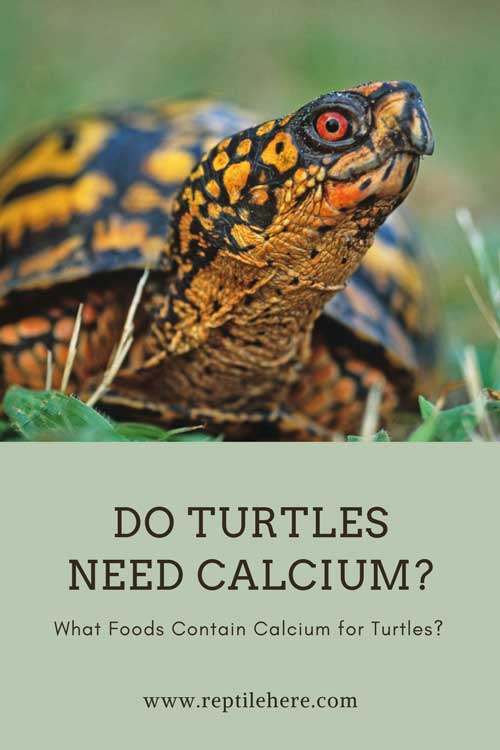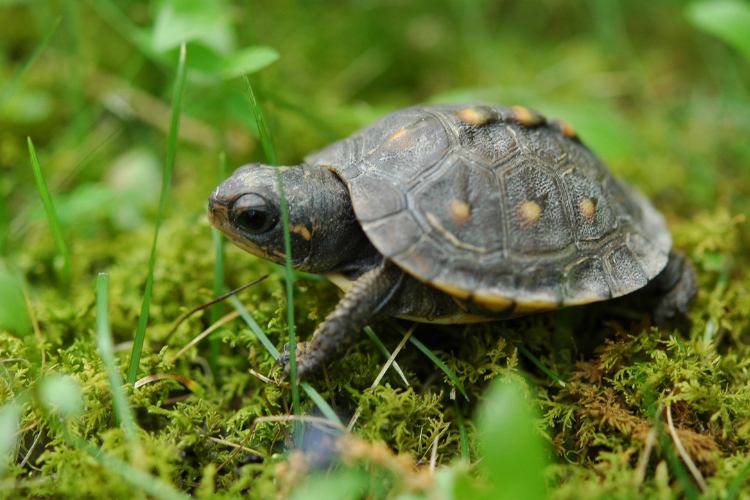Do Turtles Need Calcium? What Foods Contain Calcium for Turtles?
The nutritional requirement of a turtle can be broken down into carbohydrates, fat, protein, vitamins, and minerals. Among all the minerals, calcium plays an essential role in a turtle’s diet for the additional demand in its shell.
Do turtles need calcium? Yes, turtles need calcium for the regular functioning of their shell, bones, and muscle contraction. Dr. Starkey, Education Veterinarian and Technical Services Manager for PetSmart, say it’s crucial to supplement turtles with calcium and mineral powders. They also need minerals like phosphorus and vitamin D3 in the optimal amount to balance the calcium they take. Since pet turtles are omnivores, you can give them calcium-rich plants and proteins like insects, shrimps, and feeder fishes.
The regular turtle diet can’t meet the calcium requirements, So VCA Hospitals recommend giving turtles calcium powder twice or thrice weekly. If you want to ensure your turtle doesn’t suffer from calcium deficiency, check out the article here.
Do Turtles Need Calcium? Why?
Contents
Reptiles require calcium from the diet to maintain their bones’ skeletal growth and functioning. It’s no exception for turtles; they probably have more calcium requirements than the others due to the increased demand for shells. Calcium keeps their shell hard and helps them maintain a healthy nervous system.
Carnivorous reptiles can get enough calcium from their regular diet consisting of other mammalian prey. But since turtles are omnivorous animals living on plants and prey, they mightn’t get enough calcium in captivity and can become calcium deficient. It can lead to diseases like metabolic bone disorder, anorexia, and egg-binding pregnant turtles.
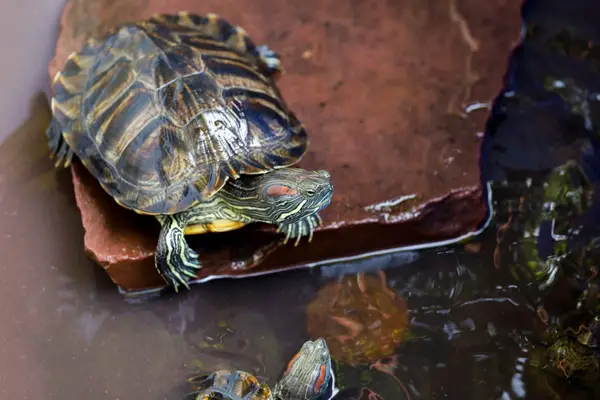
They’re not only caused because the turtle has less calcium in the body but because the body can’t absorb or metabolize enough calcium due to mineral imbalance, primarily related to vitamin D3 and phosphorus. So there could be three possible scenarios:
- Your turtle has a lack of calcium in the diet
- It’s taking enough calcium from the diet but also consuming excessive phosphorus that’s preventing calcium absorption
- It lacks vitamin D3, and the body can’t utilize the calcium
If these instances occur, your turtle will suffer from mild to severe health concerns that we’ll cover in the next section.
Problems Associated with Calcium Deficiency in Turtles
Here we’ve listed the major health concerns associated with the lack of calcium intake or metabolization for turtles.
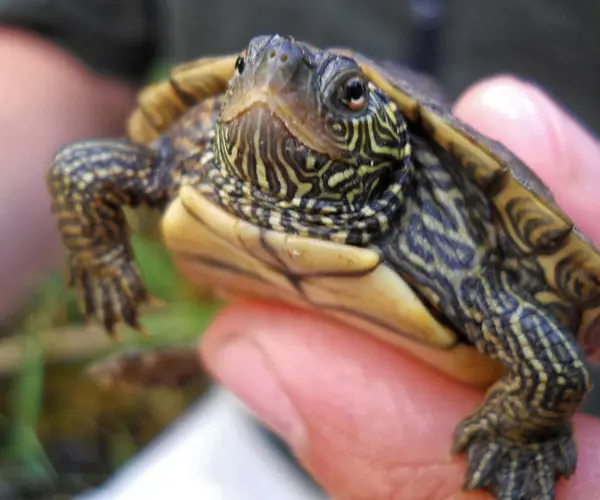
1. Metabolic Bone Disease
Metabolic Bone Disease (MBD) is a severe condition where the shell or skeletal structure starts to soften or deform due to calcium and phosphorus imbalance. Research suggests it’s a common condition found in captive Testudines (reptiles) and remains undiagnosed until a later stage.
The primary cause of this disease is high phosphate in the turtle body, with low calcium and vitamin D, primarily due to a poor diet and lack of UVB exposure. Its symptoms include:
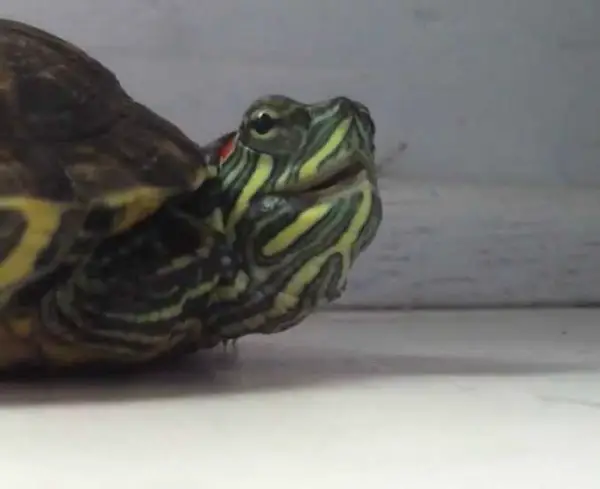
- Soft/rubbery shell
- Shell pyramiding
- Awkward movement during walking or swimming
- Lumps
- Lack of appetite
- Fracture, weakness, or repeated tremors in more advanced cases.
2. Anorexia
Calcium deficiency can lead to another condition in turtles known as anorexia. Just as it’s needed for bone and shell development, calcium is also essential for the proper contraction of the muscles.
Due to the lack of calcium, the peristalsis that moves digestive waste gets weak. The overall digestive process in their gut slows down, reducing their appetite. So they eat less, lose weight, and can face many life-threatening consequences.
3. Abnormal Shell Development During Hatchling
Turtles bought from pet shops sometimes have abnormally shaped shells that never grow back to look normal. The inadequate calcium levels in the diet during hatchling are what causes this condition. These turtles are often diagnosed with scoliosis (curvature of the spine) or deformed shell if ever x-rayed.
4. Egg-binding in Pregnant Turtles
A calcium deficiency increases the chance of pregnant turtles becoming egg-bound, a condition where the pregnant turtle can’t expel her eggs. The lack of calcium causes muscle contractions of the turtle to be so weak that she can’t lay her eggs, and it gets stuck in the body.
Also read: Can Turtles See in The Dark?
What Staple Foods Naturally Meet Calcium Demand for Turtles?
Here are you options to check out if you’re looking to ensure calcium intake for your turtle naturally.
Protein Sources
We’ve listed the protein sources to ensure a calcium-rich diet for your pet turtle.
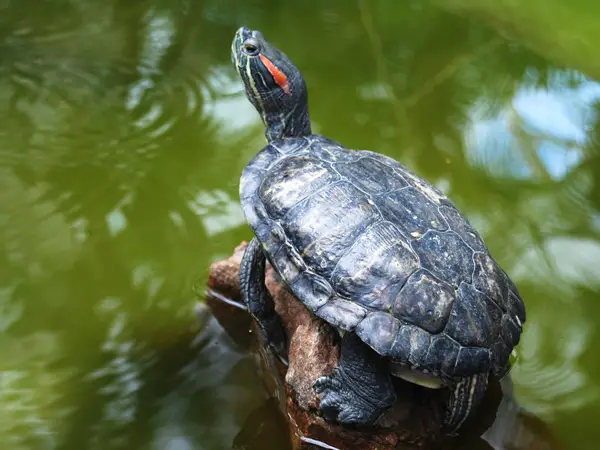
Feeder Fish
Freshwater fish makes an excellent choice for calcium to add to your pet turtle’s diet. Some popular options include guppies, bass, killifish, platies, medaka, shrines, etc. You can collect them from the local pet stores. But avoid buying fish species, such as goldfish or rosy red minnows.
Live Insects
Worms and insects are the most readily available live protein sources to offer your turtle to meet its calcium requirement. Some insects with a high amount of calcium include crickets, roaches, and earthworms. You should try to buy the live ones instead of the dried ones. Don’t feed insects caught in the wild, and keep the amount to a moderate level.
Shrimp, Crayfish, or Other Crustaceans
Other calcium-rich foods to add to your pet turtles‘ diet are shrimp, crayfish, or other crustaceans like krill. Turtles in the wild often catch them alive to eat. So it’s better to offer them live ones and ensure your turtle eats them intact, as their shell contains most of the calcium. They’re also available in pet stores in frozen form.
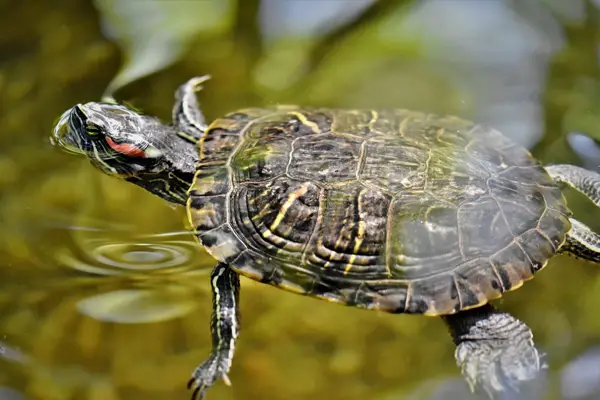
Vegan Sources
Turtles in the wild not only get their calcium from open-source proteins but also the leafy green veggies. Kale, chard, spinach, and cabbage are excellent sources of calcium. You can add plants like milk thistle or dandelion to your turtle’s diet to meet its calcium requirements.
What Food Supplement to Give Turtles to Ensure Calcium Intake?
Here are some readily-available supplements you can give your turtles alongside the staple food to meet their calcium needs.
Cuttlebones
Calcium cuttlebones are the cheapest and easiest supplement to add to your turtle’s diet for increased calcium demand. They’re available in white, chalky shells, which could be hard for the turtles to swallow. So you need to scrape it off and break it into pelleted size so your turtle can quickly gobble it up.
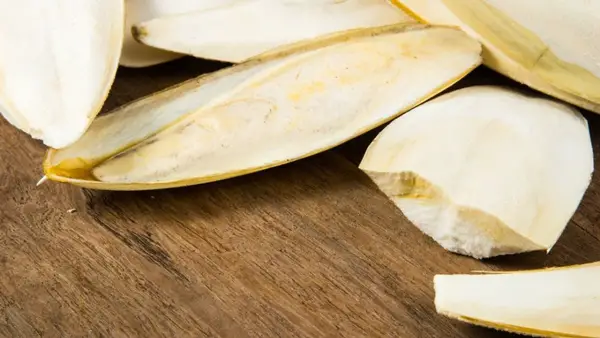
Phosphorus-free Calcium Powder
Phosphorus-free calcium powders like calcium carbonate or gluconate are readily available in the market. Many turtle breeders straight away choose this option for their turtles.
You can add it to the food easily while offering it on the land but giving it in the water is tricky as the powder will dissolve before your turtle eats it. To do that:
- Put the meals in a plastic bag and moisten them with water.
- Add the calcium powder to the bag and mix it with the meal by shaking.
- Dry the food before you offer them in the turtle tank.
Calcium Release Blocks
Calcium release blocks are another easy way to ensure calcium for your turtles. You just have to stick the calcium block bought from the store in the tank water, which your turtle will chew from time to time. These blocks also help condition the cloudy tank.
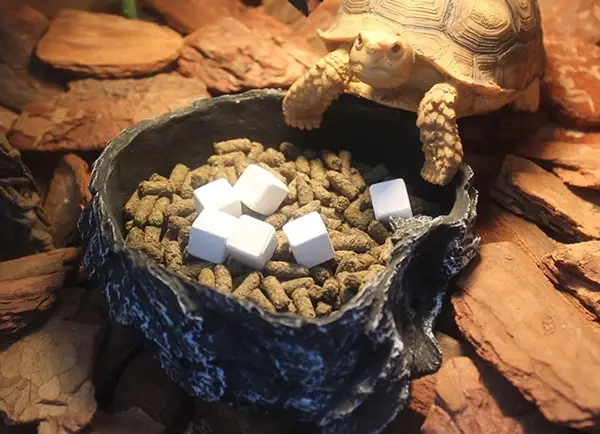
Importance of UVB Rays
As we’ve said, vitamin D3 helps turtles absorb calcium, and the best way it can be produced in the turtle’s body is through the absorption of UVB rays. Generally, turtles in the wild get it while basking in the sun, so if possible, ensure they get enough sunlight to get UVB rays. But if you can’t get it out in the sun, use artificial UV light sources, such as 2.5% to 5% UV lamps.
FAQs
Check out some common FAQs answered here.
A study from the Journal Of Zoo Animal Medicine has recommended 2% calcium in the pet turtle’s diet to keep them perfectly healthy. Although measuring 2% isn’t easy, providing them with a balanced diet that includes proteins, vegetables, and occasional calcium supplements are best.
The guide from Companion Animal Hospital suggests giving turtles a maximum of twice to a minimum of one and a half as much calcium as phosphorus. But we recommend maintaining a 2:1 calcium to phosphorus ratio to ensure the phosphorus doesn’t prevent calcium absorption.
Related: Can Turtles and Frogs Live Together?
Final Words
The lack of calcium can cause serious health concerns to your turtle. It could hurt their bone and shell development due to the metabolic bone disease condition and affect their digestive system with disorders like anorexia. So ensure it’s getting enough calcium from the diet.
Besides, provide vitamin D3 and limit phosphorus intake to metabolize the calcium consumed. We’ve discussed various calcium sources, from protein and vegan sources to some popular calcium supplements.
The key here is to provide a balanced diet for your pet turtle, including commercial pellets, live proteins, and calcium-rich vegetables. Make sure they’re offered in a moderate amount, so the body doesn’t build up excess calcium. Offer the supplements once in a while and make sure it gets enough UVB light exposure to metabolize the calcium.
